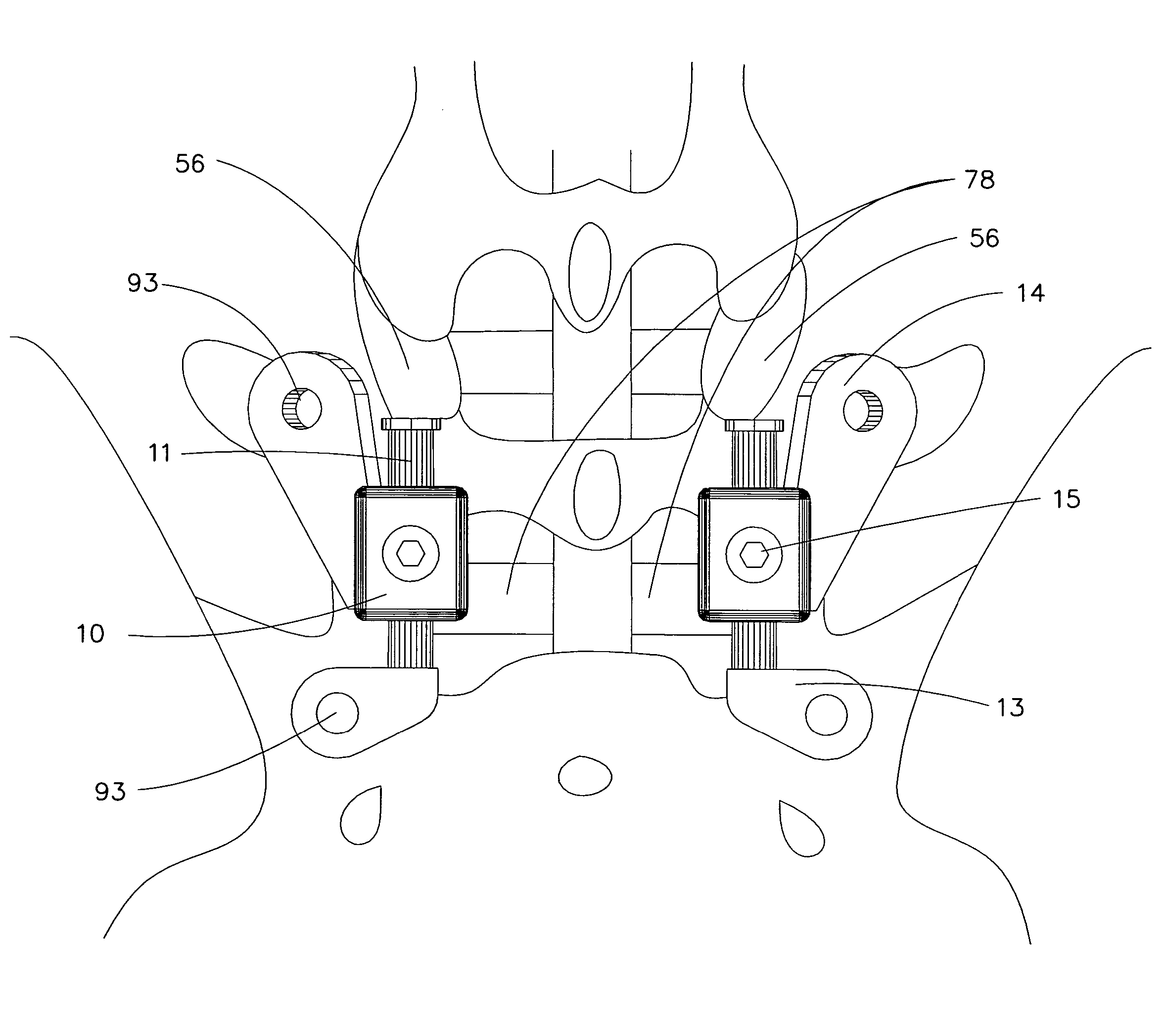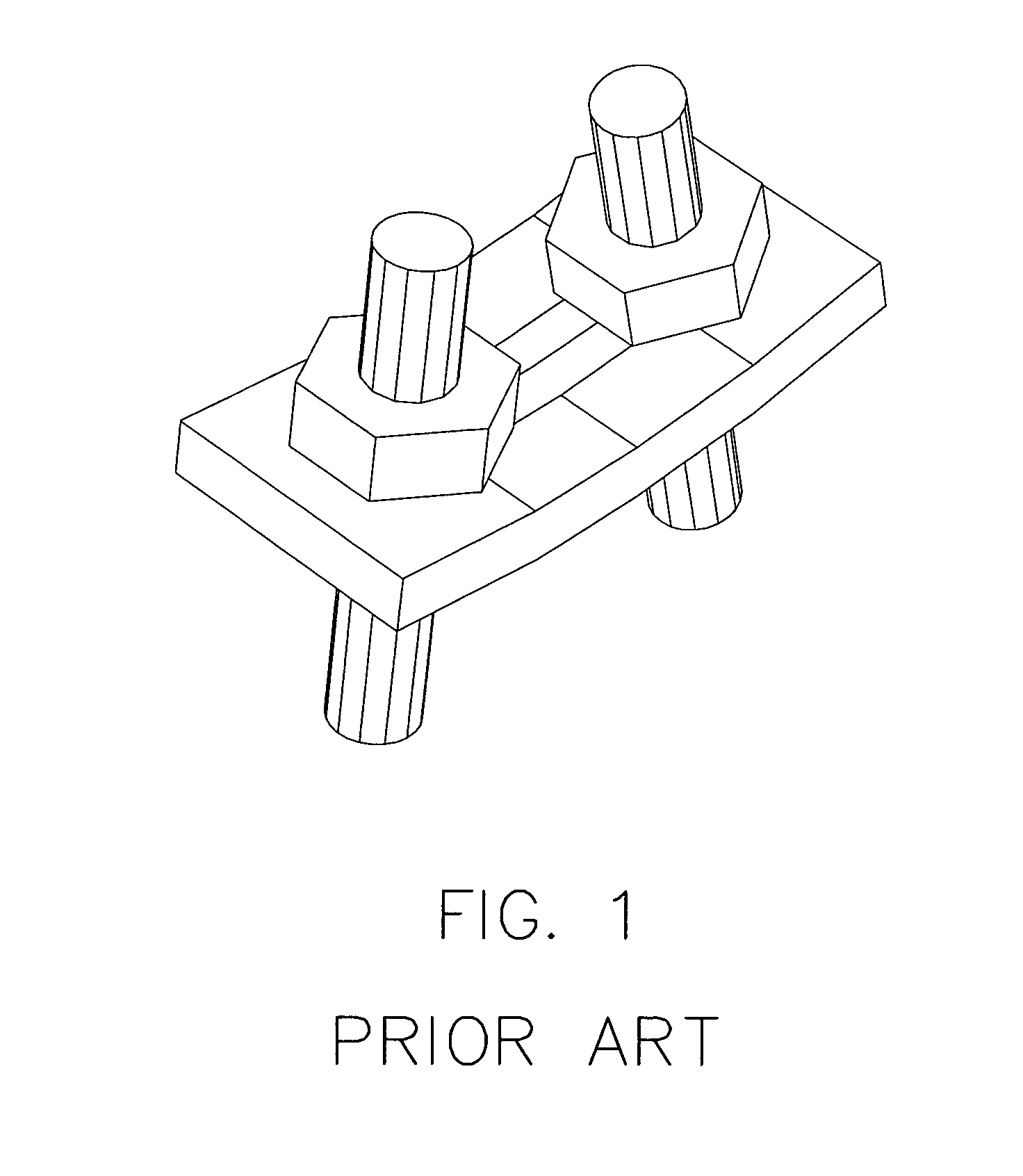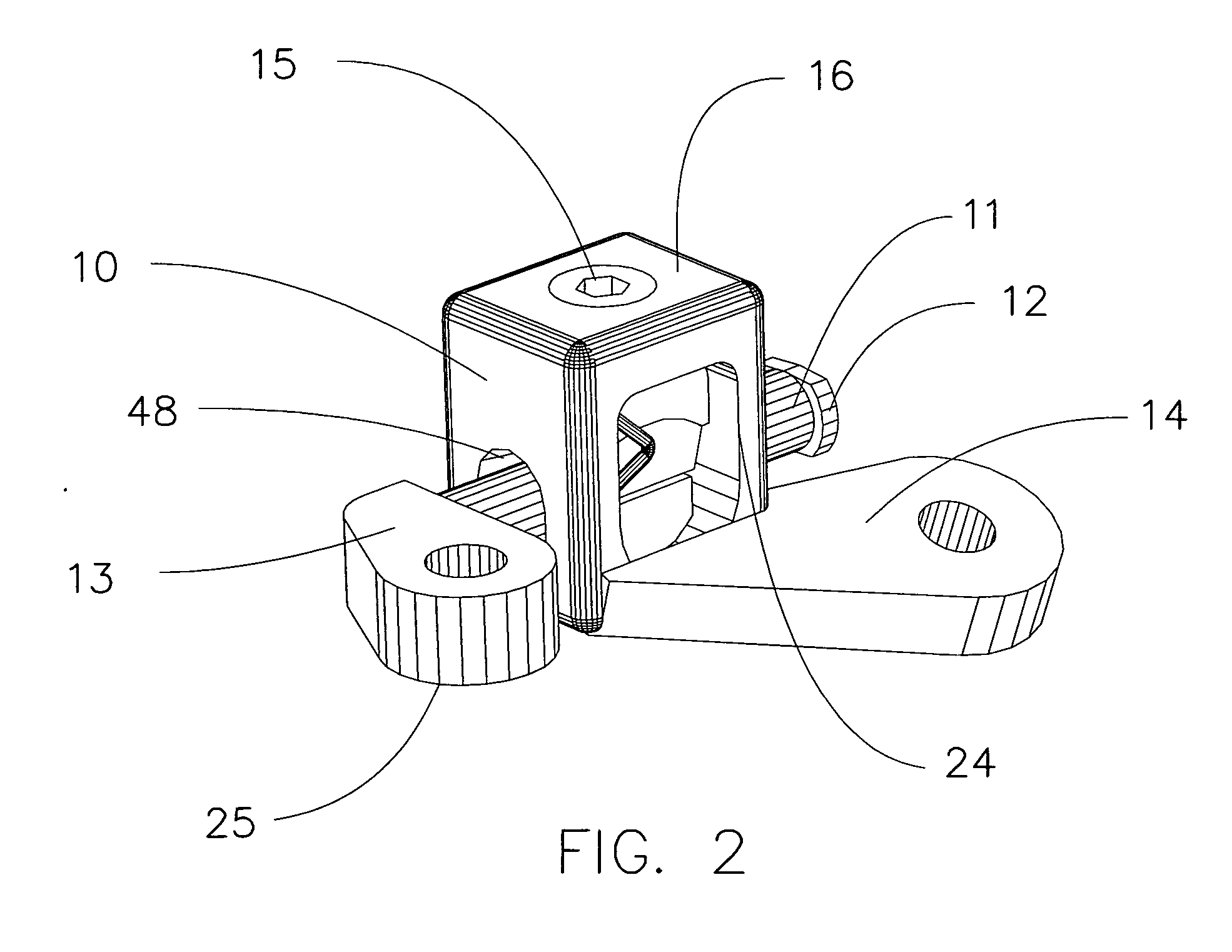Posterior fixation system
- Summary
- Abstract
- Description
- Claims
- Application Information
AI Technical Summary
Benefits of technology
Problems solved by technology
Method used
Image
Examples
Embodiment Construction
[0030]FIG. 1 refers to a perspective view of prior art showing a typical single level fixation system.
[0031]FIG. 2 refers to a perspective view of an embodiment of a fixation system showing the clamping block 10 and the set screw 15 center mounted in the clamping block. Visible in this view is a cross member 11, a cross member safety stop 12 attached to end of the cross member 11 to prevent the possibility of disassembling during installation. Clearly seen in this view is a clamping block connector 14 attached to the clamping block 10 and a cross member connector 13 attached to the cross member 11. Another feature visible in this view is the flat top with rounded sides 16 reducing any discomfort the recipient might experience.
[0032]FIG. 3 refers to a top view of the preferred embodiment shown in FIG. 2. This embodiment shows the set screw 15 placed center in the clamping block 10. Also shown are cross sectional lines corresponding to the sectional views of FIG. 5 and FIG. 8.
[0033...
PUM
 Login to View More
Login to View More Abstract
Description
Claims
Application Information
 Login to View More
Login to View More - R&D
- Intellectual Property
- Life Sciences
- Materials
- Tech Scout
- Unparalleled Data Quality
- Higher Quality Content
- 60% Fewer Hallucinations
Browse by: Latest US Patents, China's latest patents, Technical Efficacy Thesaurus, Application Domain, Technology Topic, Popular Technical Reports.
© 2025 PatSnap. All rights reserved.Legal|Privacy policy|Modern Slavery Act Transparency Statement|Sitemap|About US| Contact US: help@patsnap.com



